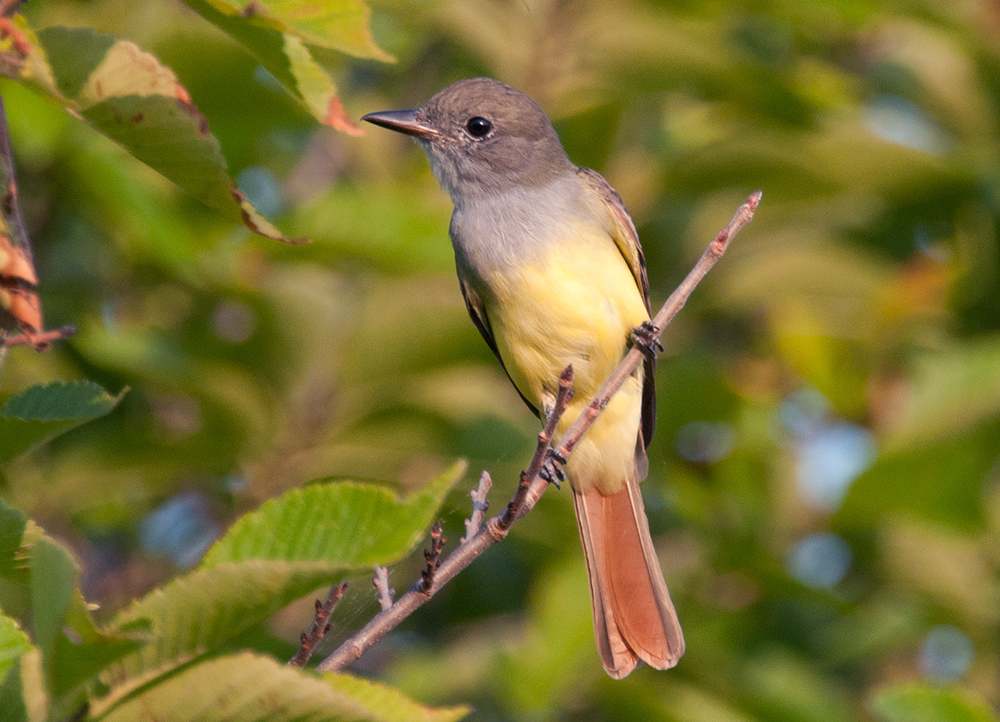| Early Spring Date: | April 19 |
| Late Spring Date: | June 1 |
| Best Dates to See in Spring: | April 25 - May 31 |
| Has Nested in Park | |
Spring: Great Crested Flycatchers are common migrants in the Washington metro area. They breed locally, and they have nested at Monticello Park and the surrounding neighborhood. They usually begin to arrive at the end of April, and you have a good chance to encounter one through much of May.
Fall: In most years, 10 or fewer Great-crested Flycatcher are seen at Monticello in the fall. They are most likely to be found from the end of August through the first two weeks in September. The number of sightings can be higher in years when they nest successfully in or near the park.
Where to See Them in the Park
Great Crested Flycatchers are much easier to hear than to see, because they spend much of their time in the canopy. When you hear one, you need to look high in the trees and hope you can see one perched or hawking an insect.
Physical Description

Great Crested Flycatchers are the largest and easiest to identify of the flycatchers who visit Monticello. They have a yellow belly, a rufous tail, and a gray throat and chin.

The back is olive brown. The wings are mostly dark with white edges. Some of the wing feathers are rufous like the tail. The crest is responsible for the bird's name. The sexes are similar, and adult plumage looks the same in the spring and fall.
Vocalizations
Great Crested Flycatchers can be very vocal, which is one of the only ways you know they are in the park. They have a number of vocalizations, but two of them are the most common. One sounds like a long wheeeeeep. The other sounds like someone blowing a whistle.
Hear the vocalizations of the Great Crested Flycatcher.Notes
The Great Crested Flycatcher is the only species in the genus Myiarchus regularly found in the Washington Area. Western North America has a number of Myiarchus flycatchers who look alike, and Central and South America have a lot more. Knowing the vocalizations can be important when trying to identify them. Only after seeing a lot of them and getting a good feel for their size, shape, and characteristics can you begin to feel confident in telling them apart.
Origin of Names
Common Names: Great from their relatively large size. Crested from their crest. Flycatcher because they catch flies.
Genus Name: Myiarchus means a fly ruler.
Species Name: Crinitus means hairy, from the crest.
Great Crested Flycatcher video footage
Return to the Index
